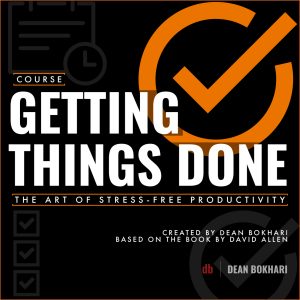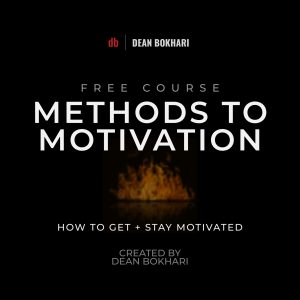All businesses, organizations, and careers operate on three levels: (1) WHAT we do, (2) HOW we do it, and (3) WHY we do it.We’re all acquainted with WHAT we do—the products we sell, the services we offer, the jobs we do. A few of us know HOW we do it—the things we think differentiate us or make us unique compared to the rest of the crowd, or our competition. But only a handful of us can clearly articulate WHY we do what we do…
Our WHY is the purpose, the cause, or the belief that drives every organization and every person’s individual career.
WHY does your company exist?
WHY did you get out of bed this morning?
And WHY should anyone care?
Your WHY is what sets you apart from everyone else. It’s your purpose. It’s what inspires you to take action. Your WHY is also what inspires others to take action, spread your ideas, or buy your products.
Audio version: Press Play or Listen on iTunes
I first learned about this concept of WHY when I read Start With Why by Simon Sinek. In that book, Simon explains how some of the world’s greatest leaders inspire themselves as well as other people to take action, buy their products, or champion their cause…
They do it by clarifying, understanding, and communicating their purpose—their WHY—before communicating anything else. They start with, sell with, and lead with WHY.
Sinek’s latest book, Find Your Why, serves as his follow-up to Start With Why… While Start With Why shows you why it’s important to start with WHY; Find Your Why actually shows you how to find your WHY.
In this article/podcast, I’ll share one of my favorite ideas from Find Your Why – how to construct a WHY Statement.
Learning how to construct a WHY Statement is a crucial part of discovering your WHY, and communicating your purpose to the world. And today you’ll find out exactly how to do it.
Find Your WHY and Communicate Your Purpose
Your WHY Statement is the most effective possible way in which you can articulate your WHY—your purpose… Not just to other people, but to yourself as well.
Your WHY Statement should be:
- simple and clear
- actionable
- focused on how you’ll contribute to others, and
- expressed in affirmative language that resonates with you
Your WHY statement should be able to encapsulate all of the qualities we just mentioned—and it should be able to do so in a single sentence.
It should also be “evergreen,” meaning that it should be applicable to everything you do, both personally and professionally—without separation.
In Find Your Why, Simon Sinek and his co-authors explain that your WHY Statement is “a statement of your value at work as much as it is the reason your friends love you. We don’t have a professional WHY and personal WHY. We are who we are wherever we are. Your contribution is not a product or a service. It’s the thing around which everything you do— the decisions you make, the tasks you perform, the products you sell— aligns to bring about the impact you envision.”
The WHY Statement Format
Simon and his team provide us with a simple format to use as we draft our WHY Statement:
TO ____ SO THAT ____.
The first blank represents your contribution — the contribution you make to the lives others through your WHY. And the second blank represents the impact of your contribution.
Your job is to plug-in the blanks to create your own unique WHY Statement.
But before you start creating one, it might be helpful to have some examples to reference…
Examples of WHY Statements
Example #1. Simon Sinek’s WHY Statement
Here’s how Simon Sinek, one of the co-authors of this book, expresses his WHY:
“To inspire people to do the things that inspire them so that, together, we can change our world.”
The impact Simon wants is for each of us to change the world, in however way we can, for the better. But this alone is too broad. It’s incomplete until his intended impact is combined with his contribution—the work he actually does on Monday morning to make change happen.
The contribution portion—to inspire people—is what ties it all together, bringing focus and direction to the impact he wants to make on the world. Simon’s contribution is essentially WHAT he does (to make his WHY a reality). The books he writes, the workshops he conducts, and the speeches he gives are all part of WHAT he does to move his cause forward—to inspire people to do what inspires them.
And the more he inspires people to do what inspires them, the more of an impact he has towards making the world a better place.
Example #2. Dean Bokhari’s WHY Statement
Here’s how I express my WHY:
”To empower and educate people everywhere so that they can improve their lives and achieve their goals.”
The impact I want is for everyone, everywhere, to improve their lives and achieve their goals. And my contribution — WHAT I do to make the impact I desire — writing books and articles, delivering speeches, and publishing new episodes of my personal development podcast. The book summaries we publish at FlashBooks are also an expression of my WHY.
If you look at anything I do, you’ll notice that all roads lead back to WHY—to empower and educate people everywhere so that they can improve their lives and achieve their goals.
Now it’s your turn…
Draft Your WHY Statement
The ”TO ____ SO THAT ____” format was designed to be simple and straight-forward enough such that anyone can draft a meaningful WHY by using it. You can use it to create an individual WHY, or you can use it to create an organizational WHY. It’s a powerful tool that can pull your thoughts and actions towards doing what matters most to you.
- Grab a pen and pad and use the “TO ____ SO THAT ____” template to start drafting your own WHY Statement.
- Take as long as you need to do this, and keep in mind that you can modify your WHY as you evolve as an individual—none of this is set in stone unless you want it to be.
- Draft as many WHY Statements as you need to until you find the one that resonates with you on an emotional level.
- Once you’ve chosen a meaningful WHY Statement, take a second to congratulate yourself — you now have your very own WHY!
PS: Want the full book summary for Find Your Why? Get it here
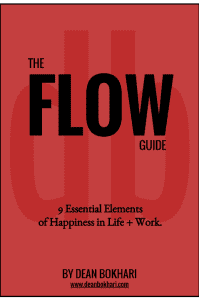
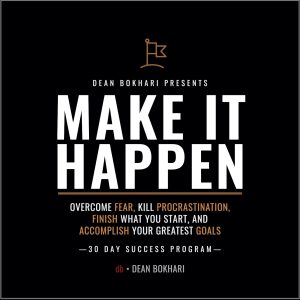
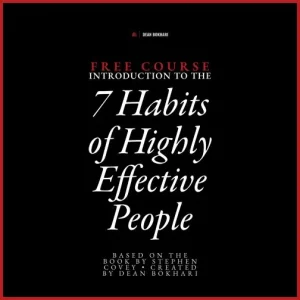 Free Course: Intro to The 7 Habits of Highly Effective People by Stephen Covey • Instructed by Dean Bokhari.
Free Course: Intro to The 7 Habits of Highly Effective People by Stephen Covey • Instructed by Dean Bokhari.